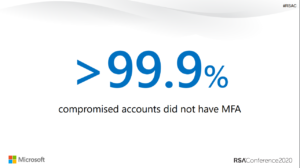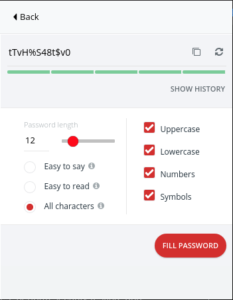How to Provide an Environment Conducive for Your New Home Schooler
Many of us are now dealing with the reality that we have children who will be attending school online. This will likely put a strain on parents to provide adequate wireless coverage, internet bandwidth and a practical computing platform for their children. It can be overwhelming to identify and understand the logistics of remote learning at home. I will explore the technical options and opportunities available to parents. This will enable parent to provide their students with a productive and resilient learning environment.
Connectivity
Internet speed requirements
Most students will leverage online classrooms and conferencing technologies like Zoom, Microsoft Teams or Google Hangouts while attending school. These video conferencing technologies can really impact the overall performance of your internet when more than one person is utilizing them. Understanding internet service speeds is important to make a good decision when choosing a plan.
Most consumer internet is available with high download speeds and lower upload speeds. It is often marketed as 100Mbps down and 5Mbps up. Understanding how much bandwidth you need can be confusing. I have found that a good rule of thumb for estimating the necessary bandwidth is to take the number of concurrent users utilizing Zoom or whatever virtual meeting software and multiply by 2.5. The number 2.5 represents the necessary speed needed to attend a meeting leveraging 1080P HD web cameras. So, if two students are attending a video call then they would consume on average about 5Mbps (2 x 2.5) both download and upload speed concurrently. Most consumer broadband plans would accommodate that need.
The only type of internet service that will not support two or more users is DSL where service numbers look more like 40Mbps download and 1.5Mbps upload. Most cable or fiber internet providers offer even better speeds than what my examples have shown. If you have a plan that doesn’t mathematically fit our equation, then you should upgrade the service or find a provider that can support the speeds you need. Keep in mind that it is always better to have more bandwidth than just enough to facilitate your requirement.
Wireless Router/Modem
Your internet provider will often provide this device for you when you subscribe to their service. The device is often a multipurpose all-in-one and acts as the modem and the wireless/wired router for your home. While these devices are convenient and have a small physical footprint, they often leave a lot to be desired with regards to wireless performance and features.
Additionally, your provider is likely leasing this device to you which is something I do not recommend participating in. The cost to lease this underwhelming device is often 10-20 dollars a month. A cost that you will pay for in perpetuity. By the time the provider replaces that device you will have payed for 2 or 3 of them outright. An alternative is to purchase your own wireless router and modem separately. I do not recommend purchasing a device that does both functions.
A great resource to find what device is best for you is to look at purchasing guides for modems and routers. Most of the devices found in the linked guides will service 90% of home users. They will support the highest speeds provided by your ISP and will also provide exceptional wireless coverage to a small or mid-sized house or apartment.
Providing coverage for a large multi-storied house is somewhat of a different story. In that scenario I would look for network solutions that can provide mesh coverage. A product like Aruba’s Instant On series is meant for large houses or small businesses . It has advanced features not found in most consumer network devices.
Regardless of what class of wireless router fits your use-case or budget, make sure to purchase a device that supports at a minimum the WIFI 5 standard or 802.11ac wave 2. Ideally, I would recommend finding a router that supports the all new standard of WIFI 6 or 802.11ax. Purchasing either technology will ensure great coverage in your house. In addition, the long-term support for mobile devices and wireless computers for your student.
Computing
Many students are being provided a computer by their school district while for some the burden is shifted to the parents. Depending on the grade level of your student and the type of schoolwork being assigned to them, choosing a computer is a little more straight forward.
For most students, any contemporary laptop or desktop will do. If the computer has an up to date operating system like Windows 10 or Apple OSX 10.8.5 or higher, your student will have what they need. Most laptops have integrated webcams and adding one to a desktop is very easy to do.
For those in the market for a new computer, I do have a few recommendations. Focus on the specs of each computer linked not necessarily on the brand and model number. I prefer HP but you may prefer Dell or any other brand.
For Windows
- Low-end HP Pavilion 15z-ef100 found here
- Mid-range HP Pavilion 15z upgraded found here
- High-end HP OMEN 15t-dh100 found here
For Apple Mac
If purchasing new is not feasible or possible, there are great opportunities to purchase refurbished computers also. I support this decision when computer expectations exceed available budget. This is especially the case when more than one child needs a computer. I would recommend purchasing refurbished business grade computers. They are affordable and are built to a higher standard than consumer grade equipment.
Peripherals
A few accessories may be necessary for your home schooler to get the most out of online classes.
A few things that may come up will be:
- Headset – for your own sanity and so your child can listen and respond to questions
- Keyboard/mouse set – typing on laptops can be hard for a child with smaller hands because they often inadvertently hit the track pad with their palm or wrist.
- Webcam – not all computers have them integrated. These are becoming hard to find and shortages have happened recently.
- Printer/Scanner – not all assignments are digital and sometimes the teacher will ask you to print a page or two and then scan them to turn them in.
- USB Wireless network adapter for a desktop. Choose one that matches the spec that your router supports– found here
We are all dealing with a very strange and tumultuous time given the pandemic and other national events. As parents, it is important that we support our kids by making their online learning experience as normal and pleasant as possible. We have enough to deal with in the world. Home IT problems should not be added to the list of our burdens. I hope this guide will help someone who feels lost negotiating the decisions for supporting their kids who are transitioning to online learning at home.
Contact Zunesis for more information on remote access solutions.
Back in March which seems like ages ago, Aruba Networks announced the release of Aruba ESP. It’s the industry’s first cloud-native platform designed to automate, unify and secure the Edge. Why the need for this new platform in today’s world? What are its secret powers for your network? And, how does it work?
Why the Need for Aruba ESP?
According to IDC, 55 billion devices will be connected within the next two years and are expected to generate 79.4ZB of data by 2025. Combine that with the shifts to work from home and distributed work forces, there is a definite need for the right tools to keep pace. With this large amount of data at the Edge, today’s networks and the teams that manage them are struggling to keep up.
Organizations need to ensure they have the right network foundation while being ready for the next big technology transition or event. This is where the need for Aruba ESP came in. Aruba ESP combines AIOps, Zero Trust Security, and a Unified Infrastructure.
What can Aruba ESP do?
It helps IT with the following:
- Identify and resolve issues quickly, preempting problems before they impact the business.
- Protect against advanced threats from a vanishing security perimeter.
- Monitor and manage thousands of wired, wireless and WAN devices across campus, branch, data center, or remote worker locations.
- Quickly deploy network services at scale at support changing business needs.
- Allow continued infrastructure investment in the face of uncertain financial changes.
Aruba ESP offers services at the Edge that include onboarding, provisioning, orchestration, analytics, location and management. These are accessed through Aruba Central. The SaaS consumption model enables rapid deployment and provides unified management, AIOps, and security. Through Central, network admins can use AI insights to help quickly troubleshoot, identify, and resolve issues before issues occur.
Significant innovations within Aruba ESP
Several new innovations are within the Aruba ESP platform:
- Cloud-native management for any size enterprise: The industry’s only controller-less, cloud-based platform that provides full-stack management and operations for wired, wireless and SD-WAN infrastructure of any size campus, data center, branch, and remote worker locations to be consumed on-premises or in the cloud.
- Simplified daily operations with unified infrastructure: The latest version of Aruba Central has simplified navigation, advanced search, and contextual views.
- Reduced resolution time with AI and automation: Aruba’s new AI Insights reduces troubleshooting time by identifying hard-to-see network configuration issues and providing root-cause, prescriptive recommendations and automated remediation to continuously optimize network operations.
- AI-powered IT Efficiencies: AI Search enables IT Teams to eliminate “swivel chair” investigations. AI Assist uses event-driven automation to collect and post all relevant data for both the internal help desk and Aruba Technical Assistance Center (TAC)
- Granular visibility across applications, devices and the network: User-center analytics from User Experience Insight to identify client, application, and network performance issues faster.
- Extension of next-gen switching to distributed and mid-size enterprises: The Aruba CX6200 switch series brings built-in analytics and automation capabilities to every network edge where user and device connectivity occurs, generating insights that can be applied to informing better business outcomes.
- Ongoing innovation with new Developer Hub: A comprehensive resource for developers that includes Aruba APIs and documentation to streamline the development of innovative, next-generation edge applications leveraging the open Aruba ESP platform.
Recently, new enhancements were announced that help unify IoT, IT and Operational Technology networks to enable customers to quickly adapt to changing environments and user requirements. Unifying these networks, enables hyper-aware facilities that are safer, more adaptive, and enhance productivity. This is a big leap forward over what can be achieved with basic connectivity and machine learning-based monitoring.
These enhancements are integral to sensing, analyzing, and reacting to device data and contextual information. Virtually every subsystem spanning machine inputs and outputs (I/O) on a manufacturing floor through multimedia devices in the CEO suite can be accommodated. Solutions are available for education, enterprise, healthcare, hospitality, industrial, manufacturing, retail, transportation and government applications.
Some Use Cases
Some use cases with Aruba ESP-based hyper-awareness include smart buildings, industrial/manufacturing facilities and the broader Intelligent Edge.
Hyper-aware smart buildings for enterprises, education, healthcare, hospitality, retail, and government:
- Building control and digital twin enablement: Identify sub-optimized processes, recommend operational enhancements, and monitor the trajectory of energy usage needed for proactive interventions.
- Context- Aware, real-time integrated emergency response and notification.: It actively communicates with tenants, visitors and staff. The use of 4D Graphics for first responders enables them to quickly see where people are within buildings.
- Seamless extension of the 5G Footprint with Wi-Fi: Mobile operators can extend 5G footprint into the building. It seamlessly powers Wi-Fi calling using Aruba Air Slice Technology.
Hyper-aware industrial facilities:
- Migrating from break/fix to proactive maintenance: Enables machinery sensors to monitor equipment to identify points of failure. Notifies before they happen, improve productivity, reliability, and efficiency.
- Reducing mean time to repair with location services: Provides site occupants with turn-by-turn navigation to a destination without human assistance.
- Monitoring personnel and asset safety: Can deliver real-time 3D situational awareness by tracking the location of people and assets. It can integrate with automated ventilation, geofencing, and vehicular navigation systems.
Aruba ESP produces AI- powered insights with greater than 95% accuracy. It helps automatically improve communications and visibility across and among IoT, IT and OT Networks.
Have more questions about Aruba ESP? Attend our webinar on September 30th or reach out to one of our account reps to learn more.
What are MFA, 2FA, and why do we need them?

“Something you know, something you have, something you are.” This is stated by Multi-Factor Authentication enthusiasts all over the web. They are ways of identifying yourself for the purpose of gaining access to a system. Examples of these would be your username/password combination, a OTP (One Time Password) sent be SMS or authenticator app, and biometrics. 2FA is of course a subset of MFA. It uses two factors to authenticate your logon. AND NO, USERNAME + PASSWORD ARE NOT TWO FACTORS.
Compared to single factor authentication, MFA ensures that your accounts are much better protected. “99.9% less likely to be compromised” is found on Microsoft based on their records of 99.9% of compromised accounts not using MFA. This was stated by Alex Weinert, Director of Identity Security at Microsoft at a recent cyber security conference.

Perhaps even more disturbing is that there is ONLY AN 11% MFA ADOPTION RATE AMONG ENTERPRISE CLOUD USERS. It’s not like we keep important data in our business emails. We also don’t use these same emails as recovery addresses for other business related online accounts. Joking aside, we are almost asking for security breaches.
Why aren’t you using Multi-factor Authentication?
We live in times where ransomware, social engineering, and other cyber attacks are on the rise. By not utilizing multi-factor authentication, you are doing the equivalent of using 1-2-3-4-5 as your combination on your luggage. Something almost as bad is re-using the same couple of passwords everywhere. Your password expired? Just update it from SecurePW1! to SecurePW2@ and it will meet complexity requirements and be super secure, right?
The practical issue with using very complicated passwords is that they are very difficult to remember by design. This is where a password manager is very helpful. You don’t want to be the person with a bunch of sticky notes on your monitor with login credentials written on them.

You can generate very secure passwords as seen in the LastPass example below, and store them in a vault.

Combined with a complicated password, using MFA will make it much harder for bad actors to impersonate you. Most online services these days give the option of enabling multi-factor authentication. Examples are business apps like Office 365, Google Apps/Gmail, your work’s VPN application, and even personal apps like your bank, Amazon, or Facebook offer this. Your password manager is also a very good candidate to enable MFA.
How can you get started?
First, you need another factor for authentication. Hardware devices such as RSA SecureID or Yubico’s YubiKey are good choices if you really want to take things seriously. You can also just use an app. Popular apps such as Google Authenticator, Microsoft Authenticator, Authy, and Lastpass Authenticator are all good examples.
Next, head over to your favorite application and log in. Usually in the same place in the settings area where you would change a password, there should be an option to enable 2FA/MFA/2-step verification/etc. While you’re at it, you should probably change your password if it isn’t complex or you haven’t done so in a while.
Just follow the instructions to enable MFA. This will vary slightly depending on application. In general, you’ll select your authenticator app or hardware key when prompted. If using an authenticator app, you will need to scan a QR code to add that account. Once you complete the setup, enjoy knowing that your security posture has been greatly improved.
Need help enabling MFA on your business applications such as Office 365 or your VPN client? Contact us today. Our friendly Zunesis engineers are here to help!




